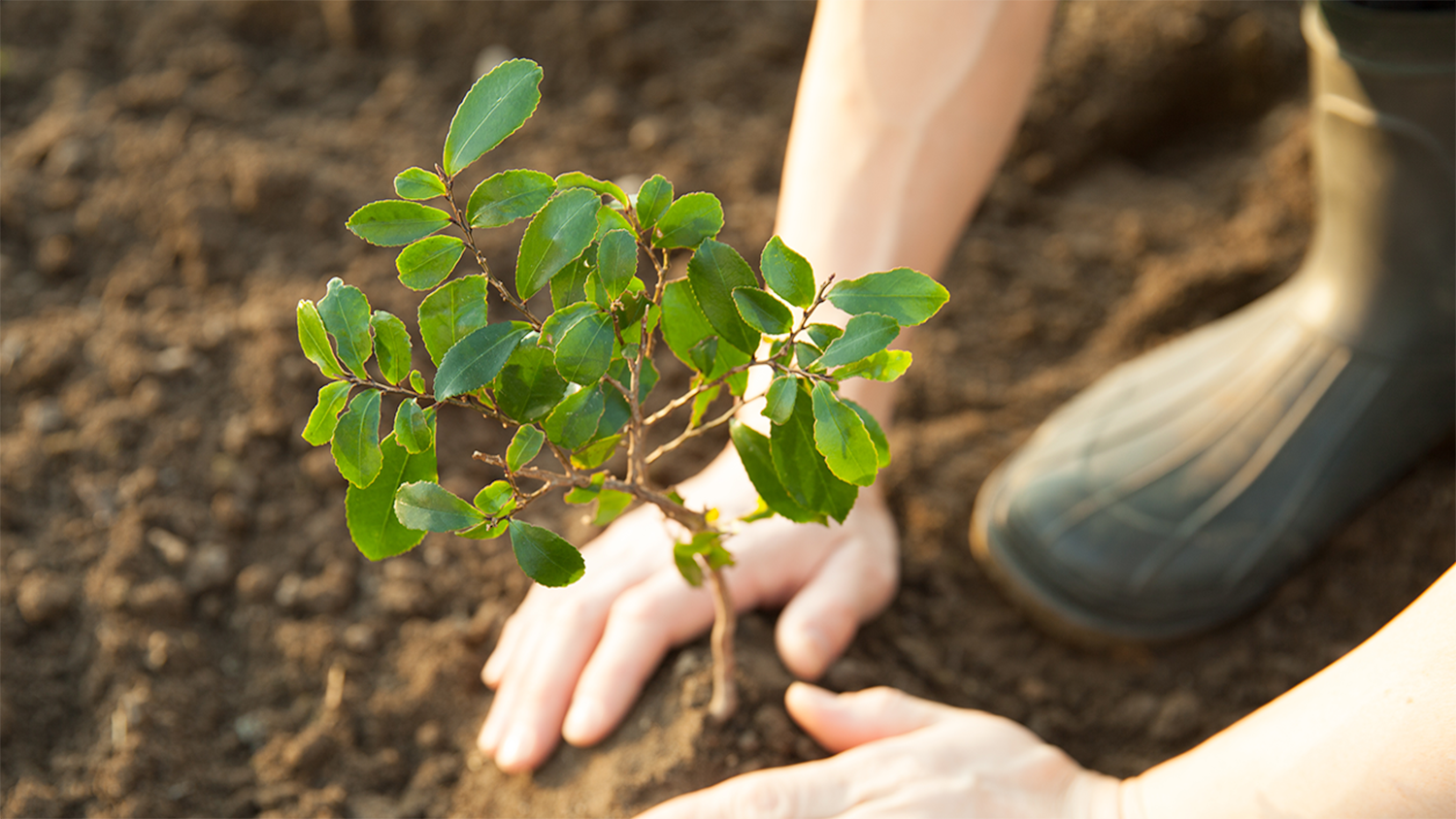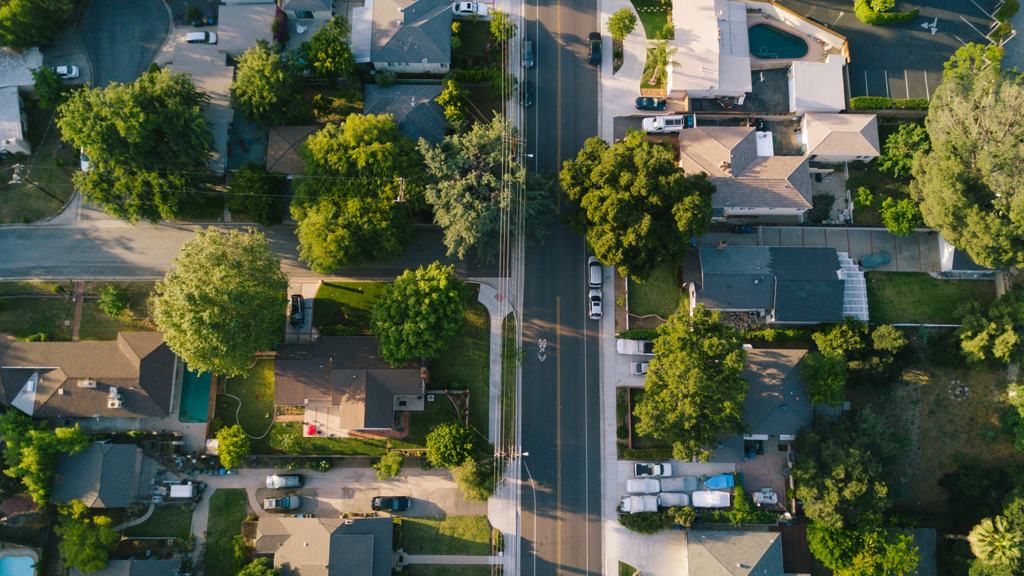Urban Tree Planting is Booming, Just Not In Low-Income and Minority Neighborhoods

As climate change brings heat waves and other extreme weather events to cities across the United States, nonprofit organizations and government agencies are heavily investing in urban greening efforts such as tree planting. Trees provide shade, reduce stormwater runoff, offset air pollution, and much more.
But the distribution of trees remains inequitable in many American cities, with low-income and non-white neighborhoods typically having fewer trees, according to Lincoln Larson, an associate professor of parks, recreation and tourism management at the NC State College of Natural Resources, whose research focuses on community-based conservation and sustainable development.
“The disparities in urban tree coverage that we see today are a direct result of systemic racism, particularly historic race-based housing policies,” Larson said. “These policies have all but ensured that low-income residents don’t have access to the environmental amenities enjoyed by higher income residents.”
For nearly four decades, until the passage of the Fair Housing Act of 1968, the federally-sponsored Home Owners’ Loan Corporation used color-coded maps to help banks determine the risk of issuing mortgage loans. It drew red lines on the maps of certain areas to indicate heightened risk, largely based on the number of Black Americans and immigrants living there — a policy known as “redlining.”
Redlining not only restricted Black Americans and other minority groups from homeownership opportunities, but it also created a lack of investment in green infrastructure in lower-income neighborhoods and communities of color. On average, trees cover nearly 50% of affluent neighborhoods but only about 23% of formerly redlined neighborhoods, meaning thousands of people remain vulnerable to extreme heat due to a lack of shade.
Unearthing the Barriers to Urban Tree Equity
With support from the U.S Forest Service, Larson and other researchers are working with colleagues from federal and municipal park agencies as well as non-governmental organizations across multiple cities to examine the various social, cultural and environmental factors that influence the success of urban tree planting programs. They ultimately hope to identify and promote strategies that nonprofit organizations and municipalities can utilize to facilitate equitable and inclusive urban greening initiatives.
Larson and his collaborators are currently evaluating the efforts of Louisville Grows in Kentucky to gain a better understanding of residential tree planting adoption in that city. The nonprofit organization was founded in 2009 with the mission of planting 1,000 trees throughout the city each year. In 2020, the executive director of Louisville Grows contacted Larson to request his assistance as the organization continued to experience a lack of engagement and participation from residents in low socioeconomic status (SES) areas.
“Most tree planting programs have historically operated on public lands and public right-of-ways. But to change the landscape of low-income communities in urban areas, they have to plant on private lands,” Larson said. “That means they need residents to buy into and support the program too.”
Despite the benefits provided by trees, nonprofit organizations and municipalities across the country sometimes face resistance from local residents when targeting low-SES areas for tree planting. “Many people aren’t aware of the importance of trees. Because of that, they see maintenance costs, leaf litter, pollen, property damage and even the potential for crime due to the fact that forested landscapes create less visibility,” Larson said.
Larson added that various sociocultural factors also play a role in residential tree planting adoption in low-SES areas. For example, when a nonprofit organization proposes such initiatives, many residents view it as an external entity telling them how to operate within their communities. Some residents also fear the potential for gentrification — and with good reason. A recent study found that green infrastructure can bring rising housing costs and community displacement.
Planting the Seeds for Urban Tree Equity
In the case of Louisville, Larson and his collaborators recently surveyed residents in the Oakdale neighborhood — a low-income community and a prime target for tree planting efforts — to assess their willingness to plant a tree in their yard. They also conducted a spatial analysis of residential greenspace throughout the neighborhood to determine the relationship between socioeconomic status and the presence of urban greening.
The researchers ultimately found that individuals with higher household incomes were most likely to experience “greenness” in urban neighborhoods. They also discovered that demographic factors such as income and race weren’t strong factors associated with tree planting uptake, while other factors such as lot size, home value and current area greeness were, meaning people with bigger homes in already green areas were more likely to accept trees.
“These results suggest that historically marginalized and low-SES populations are less likely to experience trees and green space, but they may accept tree planting at equal rates given the opportunity,” Larson said. “Tree planting programs that specifically and strategically target underserved neighborhoods, accounting for the cultural norms, values, and perceptions of people living in these areas, might therefore help to redress greenness inequities.”

Larson added that it’s imperative for nonprofit organizations and municipalities to communicate with low-SES communities when initiating tree planting campaigns and to involve them in decision-making processes, including which tree species to plant and where to plant them. Those operating within the fields of conservation and sustainability have long entered communities with scientifically-sound strategies — and good intentions — but failed to account for residents’ perceptions and needs, resulting in unsuccessful interventions.
When Louisville Grows launched its tree planting campaign, it experienced about a 10% acceptance rate in low-SES areas. Now, after years of building trust with residents and community leaders, the organization is experiencing about a 30-40% acceptance rate. “Many people do want trees in their neighborhoods. But it takes a lot of time to cultivate relationships and to get to a place where a community is willing to work with greening initiatives,” Larson said.
The goal for Larson and his collaborators, including Bethany Cutts, an associate professor of parks, recreation and tourism management at NC State, is to create a best practice guide to ensure nonprofit organizations and municipalities “work with communities, not just within communities” when implementing urban greening initiatives. These practices will be formulated from the results of the team’s case studies in Louisville as well as feedback gained from interviews and focus groups with urban and community forestry professionals from across the country.
“What we want to do is create a roadmap for anyone working in the urban forestry field to make their practices more socially equitable,” Larson said. “Everybody wins if we can plant more trees. It’s going to lead to healthier and happier lives — especially in communities that need trees the most.”


